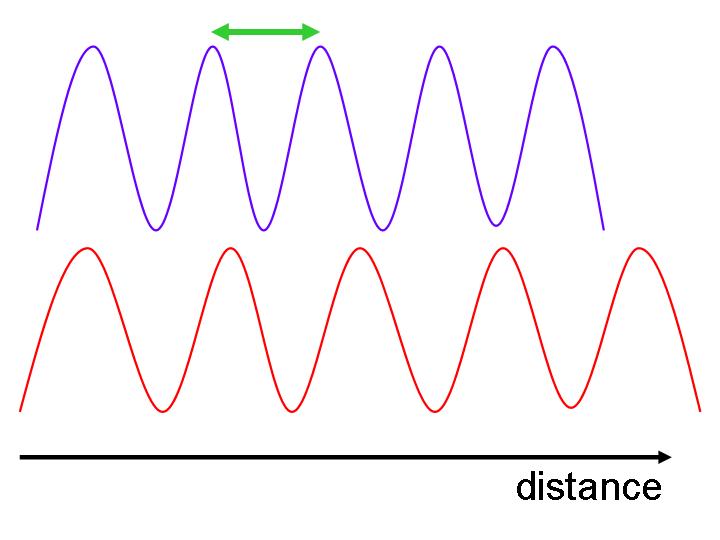|
|
 |
|
|
|
 |
| |
|
|
 |
Clouds & Particles
More |
Particles and visibility
A poor visual quality is clearly perceived as a sign of atmospheric pollution. Visibility is the greatest distance at which an observer can see a large, black object against the sky at the horizon. Several factors determine how far one can see through the atmosphere, including atmosphere’s characteristics, brightness of the sky and of the objects observed, properties of human eyes and psychological judgment of the observer. We will focus here on the atmospheric constituents that interfere with visibility. |
|
|
|
|
 |
Light in the atmosphere
Light is a kind of energy that travels in waves. The wavelength is the distance between the tops of the waves (green arrow on figure 1). Light from the sun looks white, but is in reality composed of several colours (that you can see with a prism or in a rainbow). The colours have different wavelengths, frequencies, and energies. Violet has the shortest wavelength in the visible spectrum, whereas red has the longest wavelength.
|
 |
 |
 |
|
1. Light is an electromagnetic wave. Author: J. Gourdeau
|
|
|
Light travels in a straight line as long as nothing disturbs it. In the space, light from a flashlight would only be seen by someone leading in the light’s path. It is different in our atmosphere: as light travels, it continues to go straight until it bumps into a particle or a gas molecule. Then what happens to the light depends on its wave length and the size of the thing it hits.
|
 |
 |
|
2. The light is scattered by a particle or a molecule. Author: J. Gourdeau.
|
|
 |
Gas molecules and atmospheric particles are smaller than the wavelength of visible light. When light hits a gas molecule, the molecule absorbs and scatters the light in a different direction. This is why, during the night, we can see the beam of a flashlight or the laser beams of a discotheque, even if we are not in the light’s path.
The different colours of light are affected differently. This scattering, called Rayleigh scattering, is more effective at short wavelengths (the blue colour). This is why the sky looks blue.
|
Scattering of light by particles
Visibility is reduced because the atmospheric particles between the observer and the object absorb or scatter light from the sun. Light scattering by particles is the most important phenomenon responsible for impairment of visibility; light can also be absorbed by the atmospheric constituents: for example, elemental carbon, otherwise known as “soot”, or NO2 are particularly effective at absorbing light. |
 |
 |
3. Particle's concentration is very low: visibility is around 250 km. Source: National Glacier Park. |
|
 |
 |
 |
4. Now the visibility is less than 70 km, because of the pollution. Source: National Glacier Park. |
|
|
Imagine an atmosphere totally devoid of particles: at the sea’s level, theoretical visibility would be almost 300 km, and even 500 km at the Mont Blanc’s top!
|
|
Size, concentration and chemical characteristics of particles affect the visibility. The finest particles (and particularly those between 0.1 and 1 µm) are most efficient at reducing visibility. These small particles are mostly of human origin. In Los Angeles, during pollution events, visibility can be around 8 km, instead of almost 90 km during a clear day.
|
 |
Humidity can significantly increase the effect of pollution on visibility: water soluble components of the fine aerosol can grow to seven times their dry radius, dramatically increasing scattering efficiency and thus causing visibility impairment.
|
People's perception
Increase in the amount of fine particulate in the atmosphere is associated with reductions of visibility, considered to be an indicator of overall air quality. Perception of unacceptable visibility is variable according to the environment: people may accept less easily degradation of a wilderness area than an urban environment. In a public perception study in a town, acceptable visibility was approximately 50 km.
|
 |
 |
 |
|
5. Poor visibility in an industrial area. Source: freefoto.com
|
|
About this page...
Author: Justine Gourdeau, LaMP Clermont-ferrand, France.
Scientific reviewing: Dr Paolo Laj, LaMP, France.
Date of generation: 2003-11-25. Last published: 2004-05-13.
|
|
 |
|









